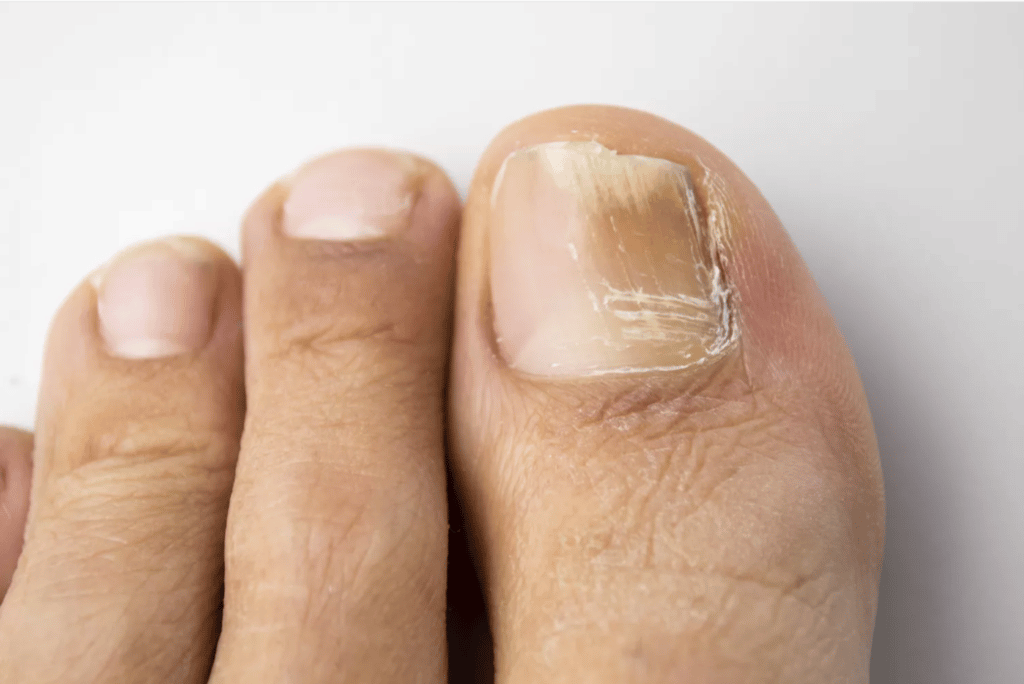The Mail on Sunday
A pain-free laser that banishes toenail fungus – caused by wearing sweaty trainers
By Roger Dobson for The Mail on Sunday
Are your feet fungus-free? Wearing hot, sweaty trainers can encourage fungal spores.
Doctors are using ‘cold’ laser beams to vaporise nail fungus, a common cause of painful, unsightly toenails. Unlike conventional lasers, which use heat, the new handheld device relies on a particular type of intense light to kill the fungus.
The painless therapy — which takes ten minutes to treat each foot — does not harm the surrounding tissue of the toe and nail bed. Furthermore, researchers say that laser therapy does not have the side effects that have been associated with drug therapy.
Nail fungus, or onychomycosis, affects between 3 and 9 per cent of the population. Toenails are four times more likely to be affected than fingernails, and men are more likely to suffer than women.
The problem is also more common with advancing age. The infection, which is similar to athlete’s foot, is caused when tiny spores of fungus infect the skin.
Wearing sweaty trainers or suffering from hot, perspiring feet provide the perfect breeding ground for the fungal spores. The risk of getting nail fungus is also greater if there is nail damage (people with conditions such as psoriasis and diabetes are particularly vulnerable).

As the fungus spreads deeper into the nail, it may cause discolouration, thickening and the development of crumbling edges. The nail can turn white, black, yellow or green and even break away from the toe.
The nail bed and surrounding skin can become inflamed and painful; in extreme cases, it can make walking difficult.
Current treatments include antifungal drugs. One of the most commonly used is terbinafine, which is taken once a day for between six weeks and three months for fingernails and between three and six months for toenails. Visible improvement isn’t usually seen in toenails until after three months.
Another standard treatment is itraconazole, which is usually given as a ‘pulsed’ treatment, with the pills taken twice a day for one week and then repeated after a month. Toenail infections usually require three such treatments.
Medicated nail paint may also help, although it’s not considered as effective as oral drugs because the infected areas can be hard to reach. Sometimes, the nail and nail bed have to be removed surgically. According to researchers leading the new laser trial, oral medications may be successful in 50 per cent of cases, while rub-on medications succeed in less than 10 per cent of patients.
The special type of laser will direct the energy beam at the big toenail at a distance of around six inches above the nail.
The intense light is said to work by breaking down the fungal cells. The use of the so-called cold laser means the treatment is not painful and has no side effects, say researchers.
Although the fungus is vaporised and killed within minutes, results will not be seen immediately because it can take several months for the diseased nail to grow out and be replaced by a new, healthy nail. In the trial at the Arizona Institute of Footcare Physicians, around 100 patients will get the laser treatment and its effects examined over a period of 27 weeks.
The researchers will look at how the nail and nail bed have reacted to the treatment.
They say early-stage studies have shown the effectiveness of laser toenail treatments to be between 80 and 90 per cent. While some patients require only one session of treatment, others will benefit from several treatments.
Discover the incredible Lunula ‘cold’ Laser treatment now conveniently offered at Waverley Foot Clinic in Farnham. Experience the difference by scheduling a consultation today at 01252 716611.
